Introducing Quintuple Rene Herse Cranks
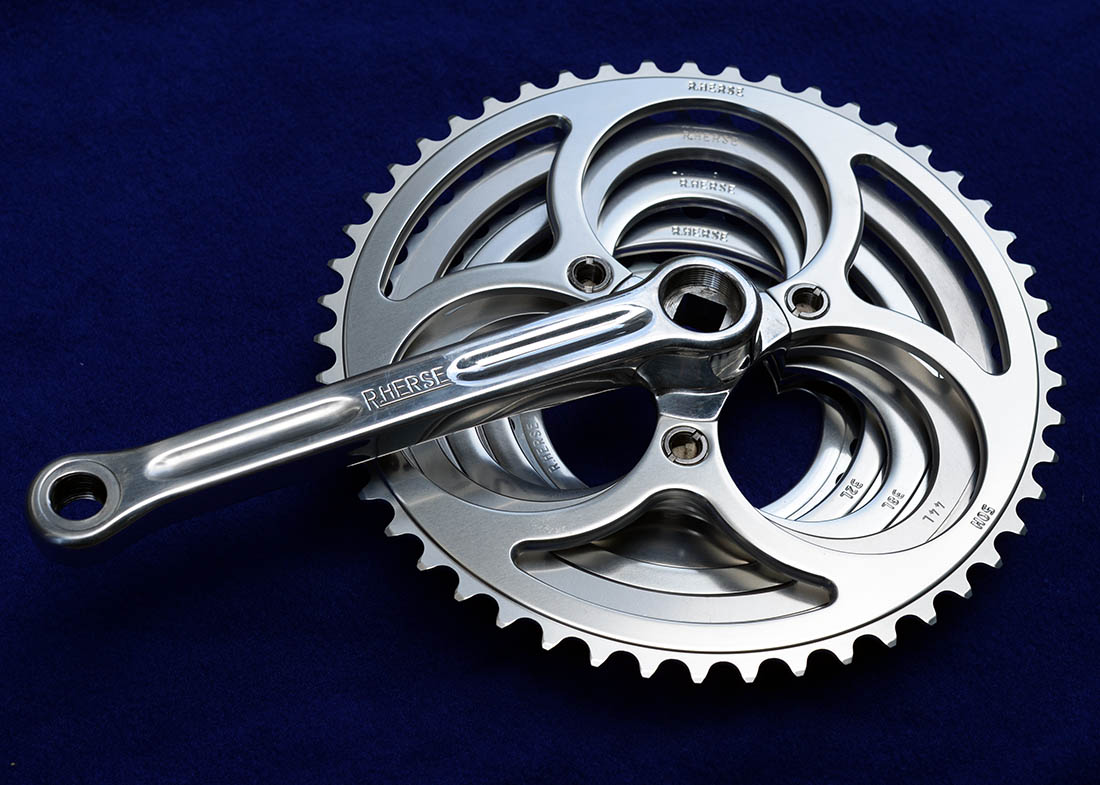
Seattle, April 1, 2018: We are proud to introduce the new René Herse quadruple and quintuple cranks. Rene Herse is one of the few manufacturers of triple cranks with a wide selection of chainrings, and we’ve received requests for even more choices.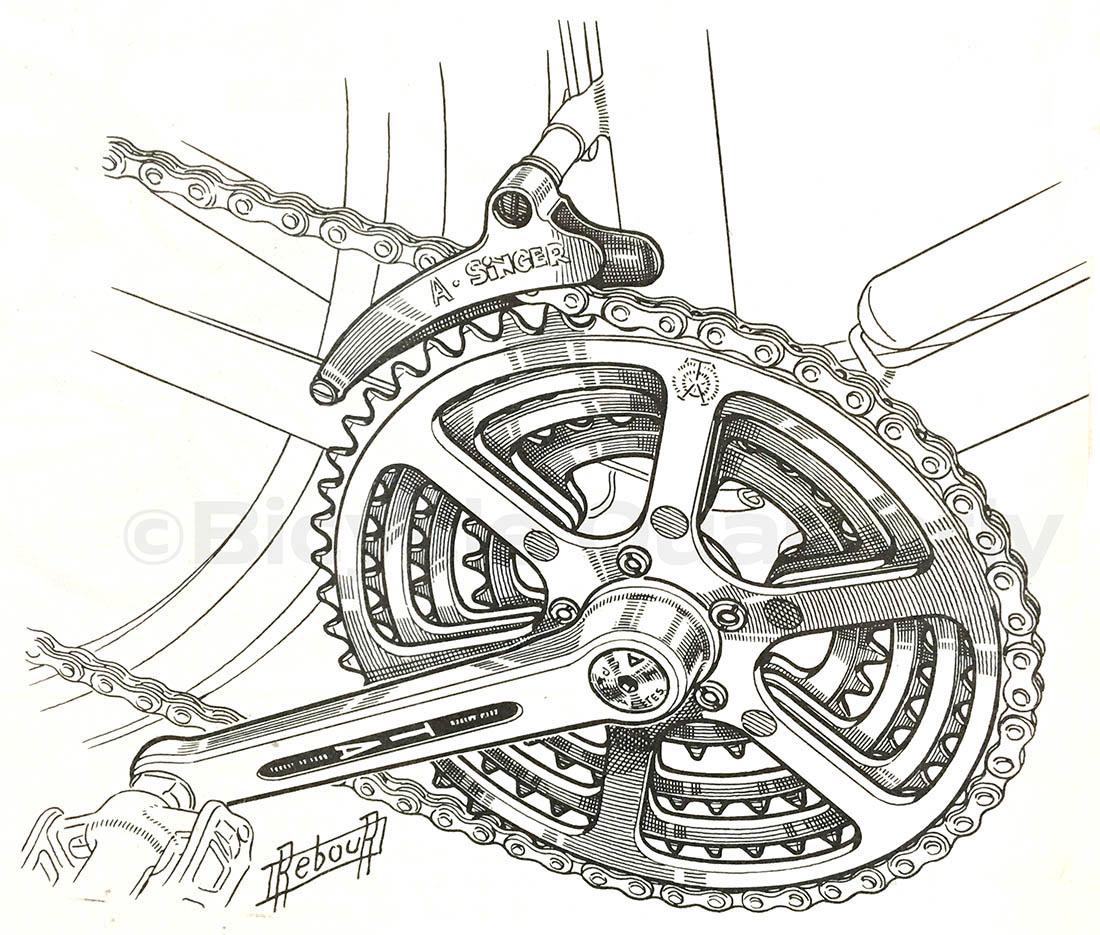
There is a historic precedent for this: Alex Singer showed a bike with quadruple cranks at the 1973 Salon de Cycle in Paris (above). The idea never caught on – back then, cyclists were conservative and unwilling to try new things. Now the time has finally come to go beyond three chainrings…
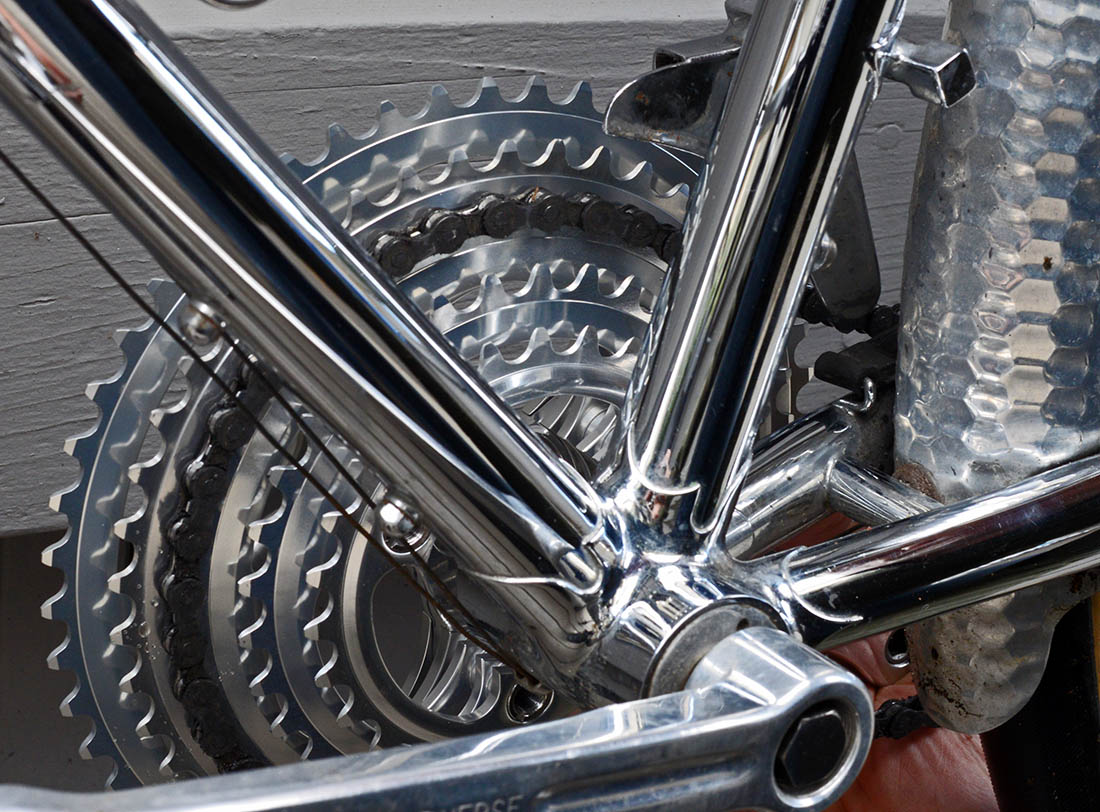
But why stop at four? In addition to quadruple Rene Herse cranks, we’ll offer quintuple configurations, too. (In the photo above, the chainring teeth reflect in the polished surfaces, making it look like there are even more chainrings!)
As always with our cranks, you can freely choose their chainrings between 52 and 24 teeth. Converting existing cranks is easy, too: All you need are extra spacers and longer chainring bolts. A bit more difficult is fitting the cranks on your bike: You’ll need a longer bottom bracket spindle and a front derailleur that moves further outward to span the four or five chainrings. Both these essential components are under development – the photos show prototypes.
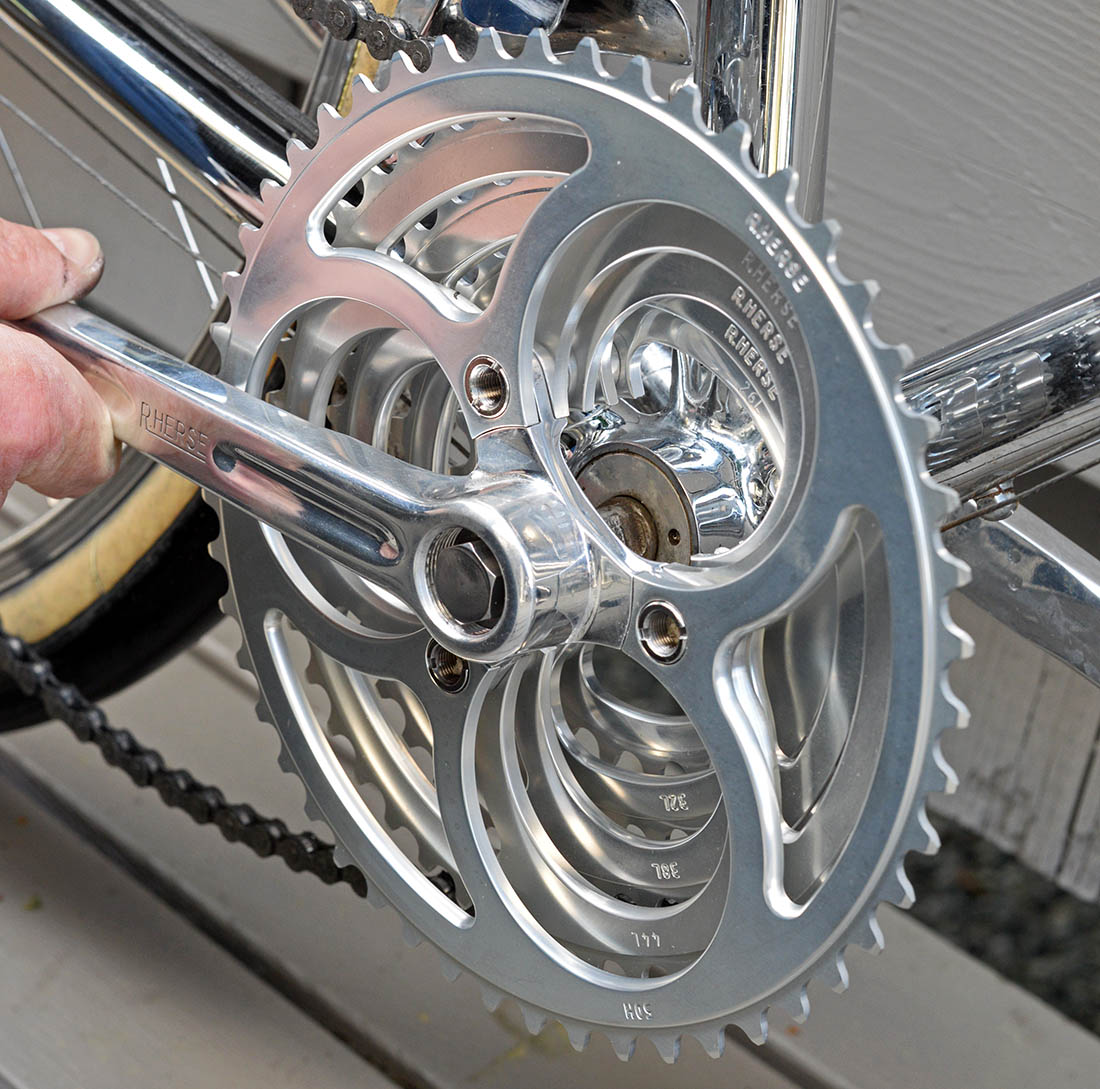
We have tested the quintuple cranks for many thousands of miles on several bikes. How do they ride?
Obviously, the appeal isn’t to have 55 gears (if you use a modern 11-speed drivetrain), because nobody needs that many… The advantage of multiple chainrings is that you can always ride in the middle of the cassette. If your speed changes due to terrain or wind, simply shift a few cogs on the rear to keep your cadence in its optimal range. And if you do need to make a front shift, the steps between chainrings are small – no need to ‘compensate’ on the rear, just shift and keep going. And with the chainrings spanning a huge gear range, you can use a closely-spaced cassette with very small steps between gears. After riding them for a few months now, I have to say, quintuple cranks are a gearhead’s nirvana.
I set up my prototype with a 50-44-38-32-26 combination, because the evenly spaced chainrings really highlight the beauty of the Rene Herse cranks. On the road, the 50-tooth chainring is perfect for those jam sessions on a slight downhill with a tailwind. Instead of being at the bottom end of my cassette (with a 46-tooth ring), I now can accelerate at will, knowing I’ll always have a bigger gear if I need it. The 44-tooth is perfect for fast ‘normal’ riding at 18-22 mph. The 38T is for days when I feel a bit less sprightly. The 32T gets me up most hills, and the 26T is for those really steep ones that I encounter only rarely, but where I used to walk my bike.
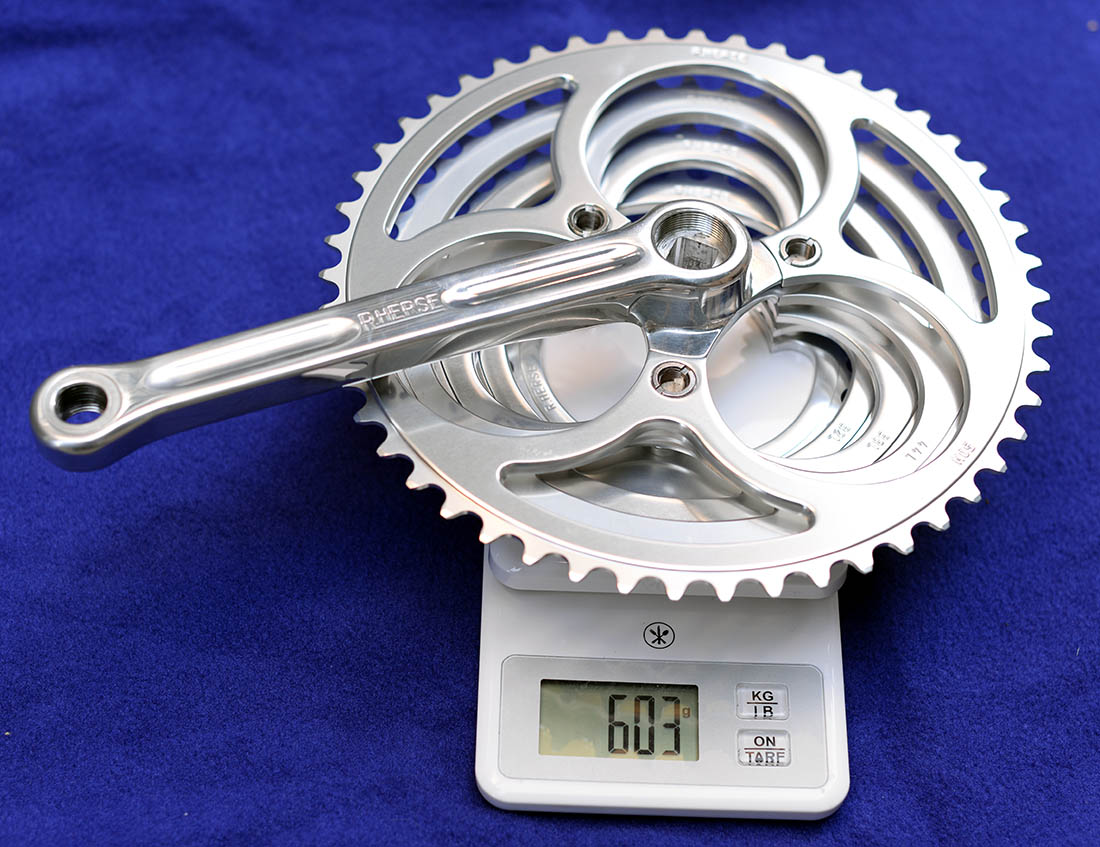
Drawbacks? Apart from the need for a custom BB spindle and front derailleur, quintuple chainrings add a little weight. This isn’t the crank to use for the Concours de Machines! Fortunately, the basic design of the Rene Herse cranks is so light that even the quintuple configuration weighs only 603 g – not much more than most 1980s mountain bike cranks.
The Q factor is a bit wider, but at 177 mm, it’s no worse than many modern ‘gravel’ cranks. Chainline can be a concern, but realistically, you’ll use the bigger chainrings with the smaller cogs of the cassette, the middle with the middle, and so on. It helps to use a tandem-spec rear hub with 145 mm spacing, as that moves the chainline outward to match the crank.
When can you get one? Testing of the prototypes is complete, and the longer BB spindles and chainring bolts are in production. We are now working on 11-speed compatible chainrings with ramps and pins to make the shifts even smoother. Front derailleurs are in the works – in the mean time, you can ask your builder to make a custom one, or just move the chain by hand. If you want to use brifters, we are working with Wolf Tooth on an adapter that will get four and five clicks out of a standard STI, Ergopower or DoubleTap lever. If you prefer electronic shifting, it’s easy to reprogram the software to offer more steps.
Quadruple and quintuple chainrings are fun. Why don’t you try them on your bike? And if you don’t like them, you can always convert them to a triple, double or even 1x – that’s the beauty of Rene Herse’s timeless design.


